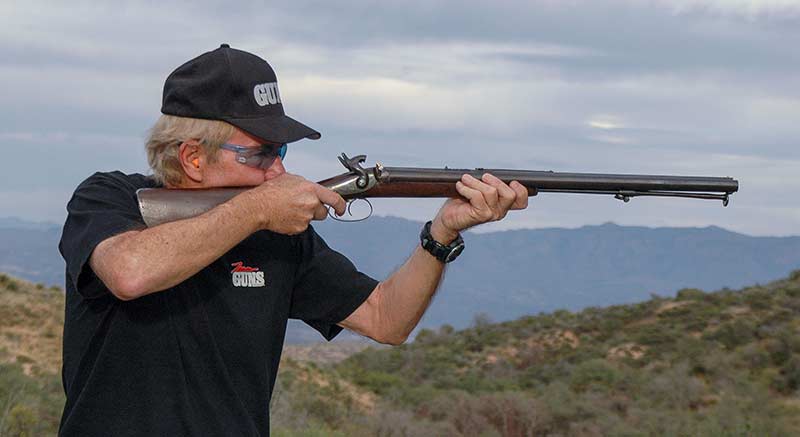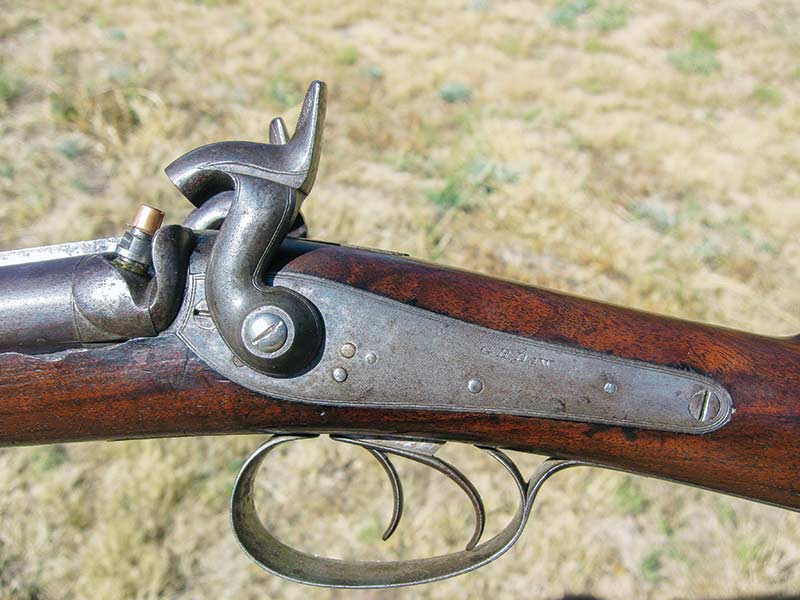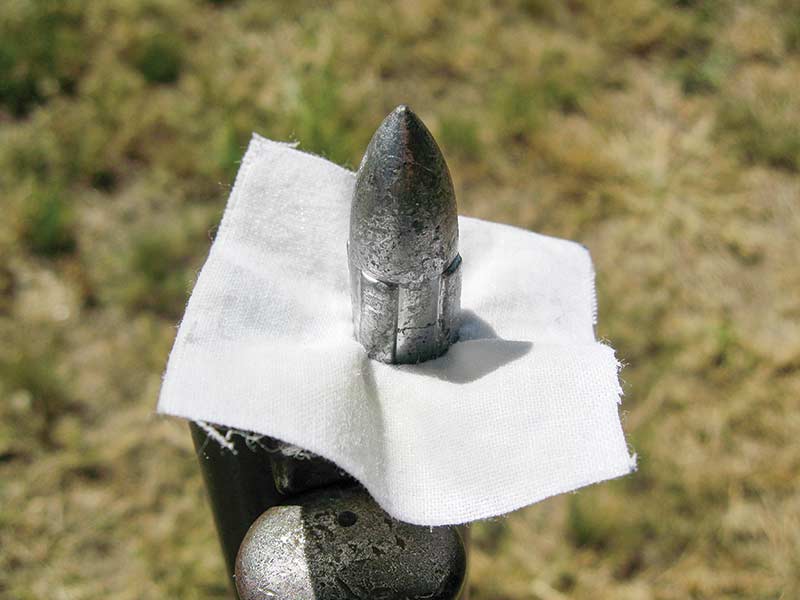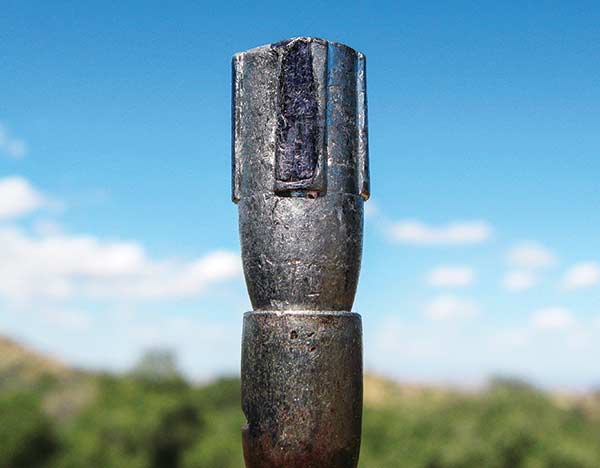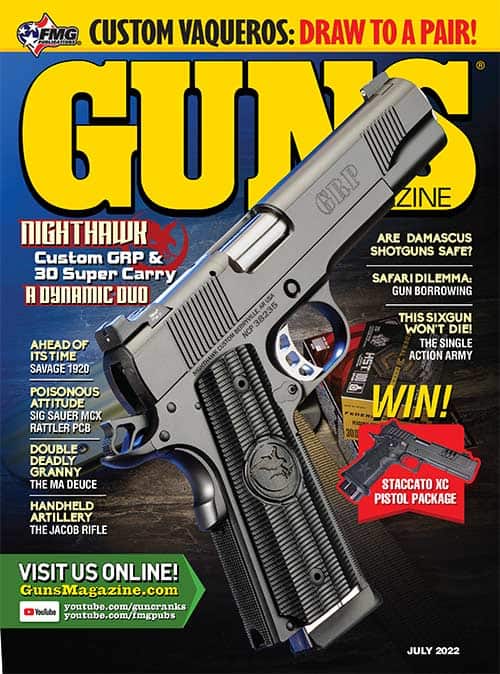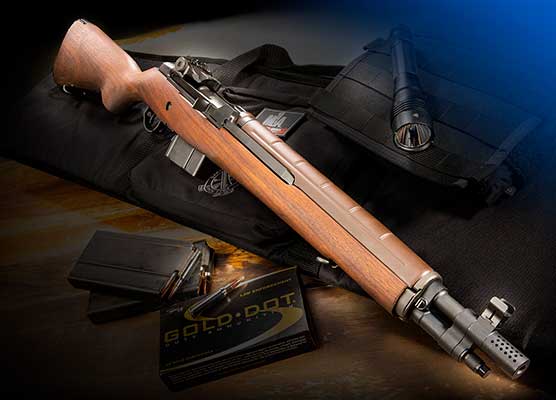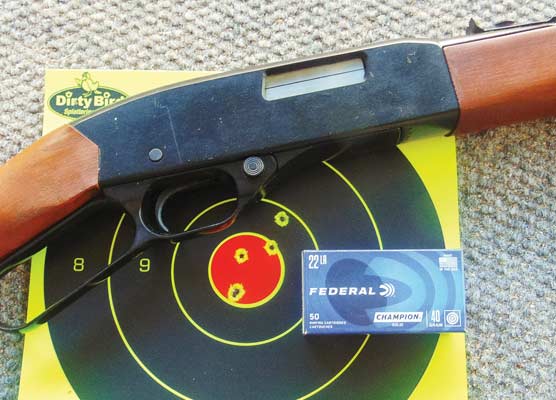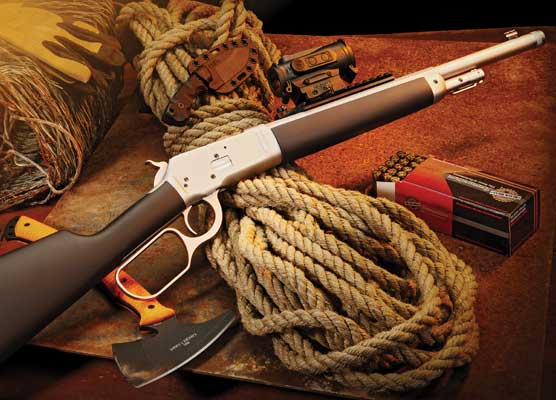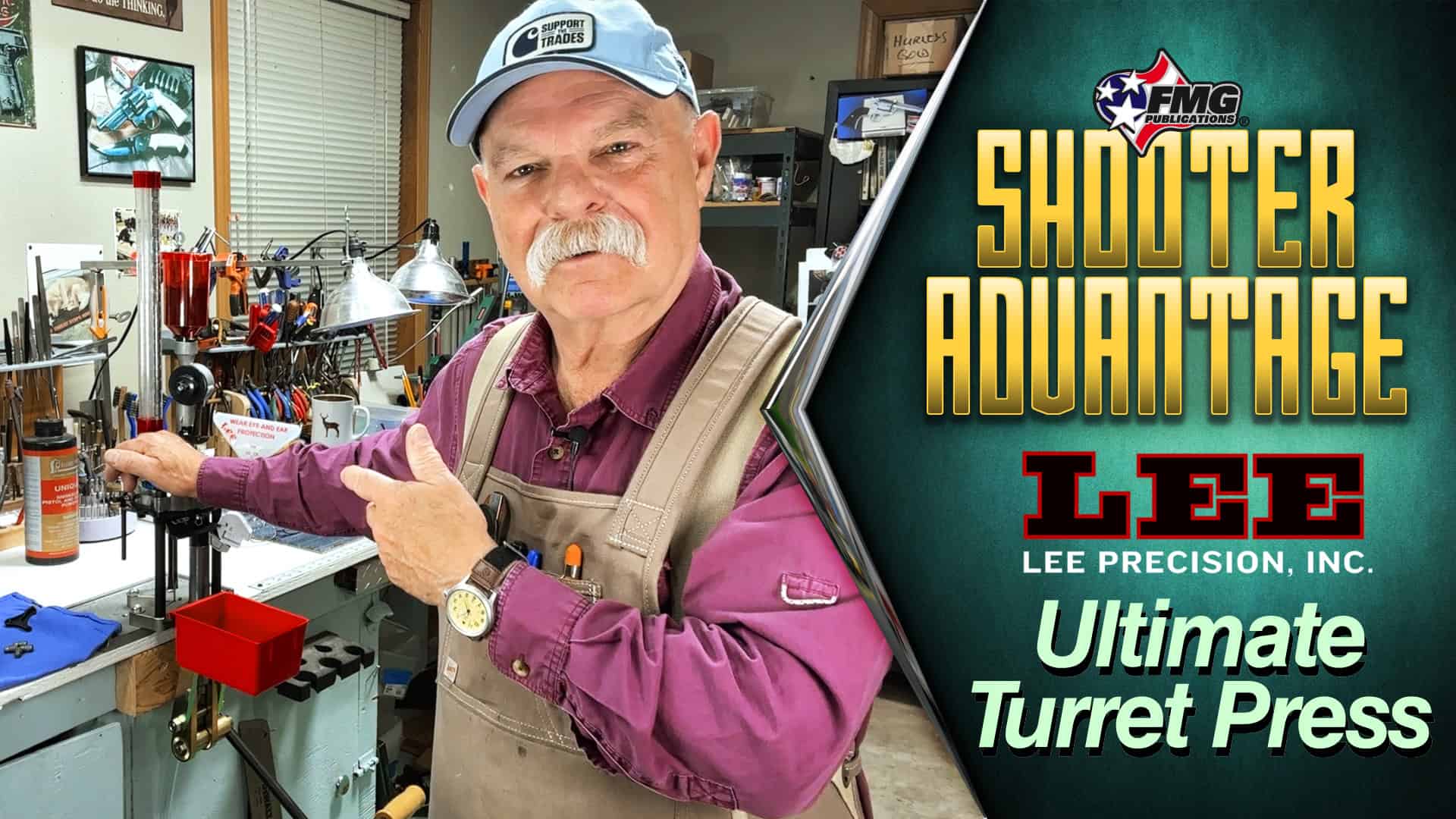The Mysterious Jacob Rifle
Blackpowder Big Bang Theory
Some rifles are so obscure and so out of reach, they haunt you for a lifetime — the Jacob has haunted me for a lifetime. Lyman’s 1958 release of their Handbook of Cast Bullets started it all.
There on page 52 was the picture of a short, stocky, rifled, percussion double rifle with a caption reading, “The Jacob’s rifle fired a four-ribbed, elongated bullet, either solid or hollow-point with an explosive charge, with astonishing accuracy. This is the type (invented by Brigadier General John Jacob) that Jacob used in blowing-up an ammunition wagon at a range of about 2,000 yards.”
Today, I sit with a Jacob’s rifle across my knees. It’s been a long hunt for a haunting rifle.
In The Beginning
Its designer, John Jacob, began his military career as a cadet at the Honorable East India Company’s military academy at Addiscombe, England — a military academy run by the commercial East India Company, you say? Yes, the East India Company was not just a mercantile enterprise, it was also a military extension of the British Empire and maintained three private armies in India — the Bombay, Madras and Bengal Armies composed of Indian units, European units and reinforced with Royal British detachments. By 1844, the combined strength of the three armies was 250,030 personnel. At the age of 16, John Jacob was commissioned as a 2nd Lieutenant and shipped off to India to join the Bombay Army, never to return to England.
Artillery and cavalry officer, inventor, engineer, city planner, Brigadier General John Jacob was so successful and so well-loved as an administrator of the India’s wild Northwest Frontier that the citizens of his administrative seat, the village of Khangarah, renamed their town, “Jacobabad” in his honor. Jacob built irrigation cannels to turn their desert into fertile farmland, constructed an extensive road network to encourage commerce and excavated a reservoir to store precious fresh water. Jacobabad still exists, now as a city in northwest Pakistan. Being only a couple of hundred miles from Kandahar, Afghanistan, Jacobabad recently served as an airbase for American bombing and drone missions flown during the Afghan war.
Jacob was both fascinated by and critical of the general-issue British Brunswick rifle. Fascinated by the Brunswick’s belted ball which was a mechanical fit in its two-groove, rifled barrel but critical because of its mediocre accuracy. Indeed, by 1852, even the British Select Committee on Small Arms reported, “The Brunswick rifle has shown itself to be much inferior in point of range to every other arm hitherto noticed.”
Ever the experimenter, Jacob designed a four-groove barrel taking a ball cast with two cross-belts and offering improved accuracy. Offering the design to his employer, the East India Company, the design was rejected with a response noting if the Brunswick model was good enough for the Royal Army, it was good enough for the soldiers in India.
Bigger Bang
Not to be dissuaded, Jacob abandoned the belted ball and began work on an advanced, belted conical bullet design and a new rifle to handle it. As an artillery officer, he was keenly interested in any method to silence the opposing guns short of counterbattery fire. One obvious solution was if one could direct precision small arms fire with an explosive bullet at the enemy’s ammunition caissons, thereby blowing them up, the effect would be to kill not only the crews but probably to destroy the guns as well. In modern terms, it would be the equivalent of using an intrepid soldier armed with an RPG/bazooka to take out a tank rather than having to commit and risk a tank or tracked tank killer of your own.
Jacob’s experiments that followed are remarkable not only for their scale but for their personal expense.
He established a shooting range at Jacobabad with white-washed, brick walls as targets located at distances from 100 to 2,000 yards. The 2,000-yard wall target was 40 feet high, 50 feet long and 3 feet thick. Testing his rifle and bullet designs from machine rests, it’s recorded he consumed tons of lead and powder. He writes, “All manner of rifles were tried, both breech and muzzle loading of every length, weight, etc., of various twists to the grooves and of various calibers from 32-bore to 8-gauge.” Just the guns alone he custom-ordered from England must have cost a fortune since he used the best makers like Manton, George H. Daw and Swinburne & Son.
Gradually, he perfected a 4-ribbed, conical projectile. It’s 32-bore (or 0.526″ caliber) weighing 650 grains and is 1.357″ long. The major body diameter is 0.513″ while the outside diameter of the ribs is 0.565″. Wrapped in a greased cotton patch, the 4-ribs of the bullet form a mechanical fit with the deep, four-grooves of the Jacob’s barrel.
Duo Design
Depending upon the mission, the bullet was made in two forms. There was a simple solid point and a hollow-point design accepting a pointed copper tube filled with fulminate of mercury and dipped in melted resin to securely lock it in place. Tests on the range indicated this explosive shell was totally reliable at 1,200 yards. Jacob was ecstatic writing, “Judging from our practice at Jacobabad, it seems certain, that two good riflemen so armed, could in 10 minutes, annihilate the best Field Battery of Artillery now existing.”
The rifle Jacob perfected to shoot this explosive shell was as unique as the projectile itself.
It’s a double rifle, although single-barrel sporting rifles were also produced by private makers. It’s also 32-bore and so stamped on the underside of both barrels along with London proof marks.
The patent breeched barrels are 24″ long and joined by a wide 0.648″ rib. To counter recoil and ensure strength, Jacob insisted the barrels weigh at least 6 lbs. It does, weighing actually 6.75 lbs. and bringing the overall weight of the rifle to 10.75 lbs. The rifle accepts standard Enfield nipples and musket caps. Additionally, it is fitted with sling swivels and an iron ramrod featuring a hollow head to fit over the explosive tip of the bullet and a broad palm piece.
The piece de resistance of the design is Jacob’s sighting system, consisting of folding leaf sights graduated from 100- to 250-yards in 50-yard increments and a 5″ tall ladder sight graduated from 200 to 1,800 yards in 100-yard increments. All this is based, I believe, on a powder charge of 2.5 drams (68-grains) of black powder.
Was Jacob’s rifle ever issued to troops? The evidence is inconclusive but given their survival rate, many were made, but few were used.
On The Range
Shooting the Jacob is a learning experience. Thanks to a generous friend I was able to acquire a supply of 32-bore bullets poured from an original Jacob mold. Although the exterior of my Jacob is in very good condition, both bores show some corrosion, particularly the right barrel — which typically gets fired first and the most — so I used the left barrel for all of my shooting. The Jacob sights are so fine and faint to my eyes I set the target at 50 yards to establish a reasonable baseline for the gun’s potential accuracy.
Given the depth of the grooves, you can actually load a 0.0530–0.535″ ball and a 0.018″ patch in the Jacob with great success in spite of the barrel’s 1:36 twist. With 45–55 grains of FFg, the Jacob easily kept 3-shot round ball groups within 1.5″ at 50-yards. The recovered, fired patches showed no signs of cutting. Frankly, I would be very happy to use the Jacob as a permanent, round ball rifle.
The singular feature of the Jacob design — what makes the Jacob a “Jacob” — is Jacob’s streamlined, 4-ribbed bullet. It proved to be a challenge. In none of Jacob’s writing does he discuss the thickness or material of the patching he used. On hand, I had 0.0065″ thick muslin and tight weave 0.010″ cotton stock. A 2″ square patch of the latter that fit perfectly around the Jacob bullet and greased with “Pure Mink Oil” from Track of the Wolf, I was in business. Well, not quite.
Loading the Jacob projectile, wrapped with a greased patch down the 24″ barrel, over 68 grains of powder proved to be a chore. The fit was so tight it required the assistance of a rawhide mallet to get the job done. However, accuracy was outstanding, equaling the round ball load and to my surprise, delivered those heavier projectiles to the same point of impact. The recovered patches evidenced just slight cutting lines along the edges of the lands. Switching over to the 0.0065″ patch, I could load it without a mallet after using a short starter, but group sizes doubled to 3″ and recovered patches evidenced severe cutting. And, oh yes, recoil was stout with the 650-grain bullet!
So, the management of the 4-ribbed missile remains a bit of a mystery to me but does nothing to dampen my enthusiasm for the unique Jacob rifle and the tale of an incredible English officer carrying out ballistic experiments on old India’s wild frontier.
